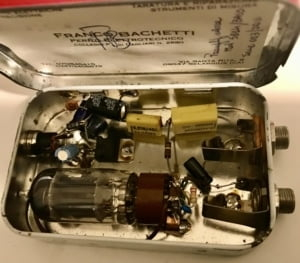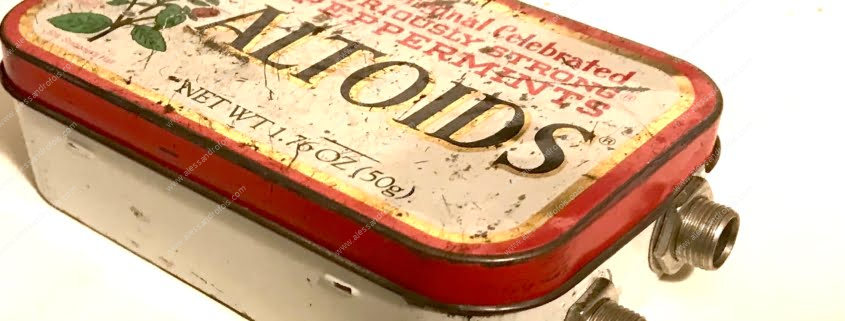Amplifying a double bass
- Author Profile
- Recent posts
Interested in jazz, classical music on original instruments, radical improvisation. Diploma from the Cagliari Conservatory. He has been active on the jazz scene since around 1980. He has played in symphony, opera and chamber music orchestras since 1985. He has been teaching double bass since 2001, and classical double bass, jazz and ensemble music at the Cagliari Conservatory since 2004.
Amplifying the double bass
Disclaimer: All statements in this article are personal opinions derived from my experience and should be considered as such. That said.
Once upon a time, there were the double bass players, those who - it is said - could recognise their ugly hands because they were deformed by the calluses they got from playing the instrument with very high gut strings to be able to be heard even with an 18-piece orchestra, or they used the slap technique like Milt Hinton. In the best case scenario, a microphone was placed in front of the instrument, and until the 70s and 80s that's roughly how it worked, then came pick-ups, steel strings, and the sound of the double bass went to hell...
Pick-Ups
In reality, the piezoelectric effect of quartz crystals was discovered around 1880 by Pierre and Paul-Jacques Curie, and the first applications in the field of audio were for the realisation of transducers, i.e. instruments capable of transforming an electrical signal into sound (loudspeaker) and vice versa (microphone). The first guitar with a piezo pick-up was a Gibson in 1968, and the first pick-ups for double basses appeared in the 1970s. The sound produced was rather rich in the mid-high range, not at all resembling that of a double bass, either due to construction characteristics or impedance matching, which I will discuss later. Today there are dozens of brands of pick-ups of all kinds, and even condenser microphones that can be applied to the instrument.
How do you navigate your way through so many products? There are many types, with different installations, although the operating principle remains the same: plates to be placed under the feet of the jumper, tabs to be installed under the wings of the jumper, simple (various brands), double (Underwood or similar), electromagnetic transducers (Schertler) etc. Then microphones: AKG, DPA, Shure, T-Bone to name a few.
Obviously if we can afford a DPA for around 500€, that's fine, especially if we have to play on an outdoor stage or in a theatre, but if we then have to use it in a club and the drummer has delusions of grandeur, we risk everything but the double bass coming out of our microphone. The contact pick-up remains the most practical solution in these cases, but...
...my opinion is that most solutions of this type suck. No matter how much you spend on equipment, all the commercial pick-ups I have tried do not perform well.
Barcus-Berry, Underwood, Polytone were the pick-ups most in vogue in the 70s and 80s, the sound that came out was a mixture between a child's metallophone and a ukulele in the case of the Barcus-Berry and the like, or a kind of meowing in the case of the Underwood. All sounds far removed from the natural timbre of the instrument and my taste. I found that the Schertler can give a good compromise between the power of the sound and the timbre, which is still very artificial.
I started experimenting with piezo transducers and after throwing away hundreds of wafers and other components, I found the solution that works best for me: a pick-up similar to the Schertler but made of balsa wood, but the essential thing is the preamplifier.
The preamplifier
This is the point that almost everyone overlooks: piezo pick-ups have a very high impedance, (even more than 5 Mohm) and the input of the amplifiers at solid state normally does not exceed 25 Kohm. The result is that the pick-up is like being short-circuited, and frequencies are not reproduced over the whole range, so an impedance adapter is needed. At the beginning of the pick-up era hardly anyone used it, and the models on the market were not very good. Just to be clear, the preamplifier in this case is not used to boost the signal of the pick-up or to equalise the sound, but to adapt the impedance. I used a Fishman Bass Blender preamplifier with a Crown GLM200 condenser microphone and an underwood pick-up for a long time. The rubbery sound of the underwood is somewhat corroborated by the attack and deep bass of the condenser mic, producing a good compromise, but as I said before in a small room the mic can give some problems, so I set out to find a scheme that would suit me. I found a very good FET transistor preamplifier scheme, with high input impedance, and produced a number of them, for myself and for colleagues and students who asked me. The best solution, however, was from a radio amateur friend of mine (Franco Bachetti, whom I thank infinitely) who gave me a beautiful mint box with a valve preamp inside, powered at low voltage (12v). Nice round, soft bass, finally the sound I wanted!
The amplifier
Amplifying a double bass with a 4 x 12" bass drum is madness. Everything vibrates, the stage, the drum skins, let alone the instrument's case. Result: guaranteed feedback, horrendous sound and always on the edge of the trigger even if you keep the volume low.
Better a small 1 x 12" or even 1 x 10" amplifier, but with good power. After using for a lifetime the legendary 100w Polytone Mini Brute with 15" speaker (which I still own and works perfectly) I had for many years a 400w and 22kg Mark Bass Combo 121. I am not at all satisfied with the sound of the Mark Bass, I find it quite fake, even that of the new lighter models with neodymium drivers. I must also say that I had other kinds of problems, such as the soldering of the printed circuit board, which didn't hold because it was too thin for the vibrations it had to withstand (I had to go over everything again because the potentiometers had practically detached themselves from the board) and the burnt-out power amps, which I replaced myself. In addition, coupling with the pick-up always requires an impedance adapter. I also bought a Phil Jones Bass cube, beautiful timbre and excellent performance despite the ridiculously small size, but more suitable for electric bass. The 5" drivers are too small to get a good rendition of the bass frequencies of the double bass. In the end I solved it with a DIY cabinet with a 12" neodymium Celestion 300W driver and a GK MB200 head.
Another no less important thing: the amplifier should be placed ON THE GROUND and the volume adjusted accordingly. Better if in a corner, where the diffusion of low frequencies is greater. You have to experiment, because every room has its own best spot where to put the amplifier. In any case absolutely NOT raised off the ground.







Leave a Reply
Want to join the discussion?Feel free to contribute!